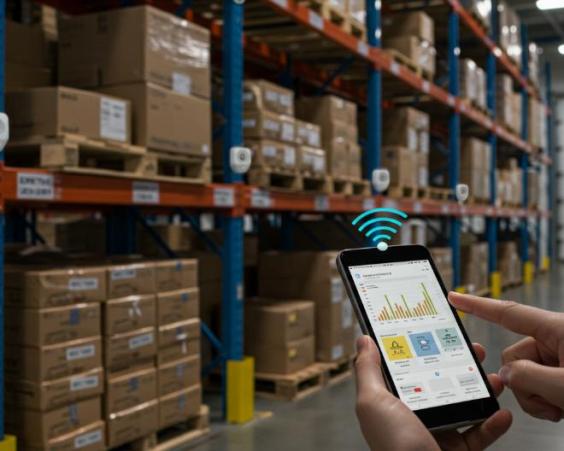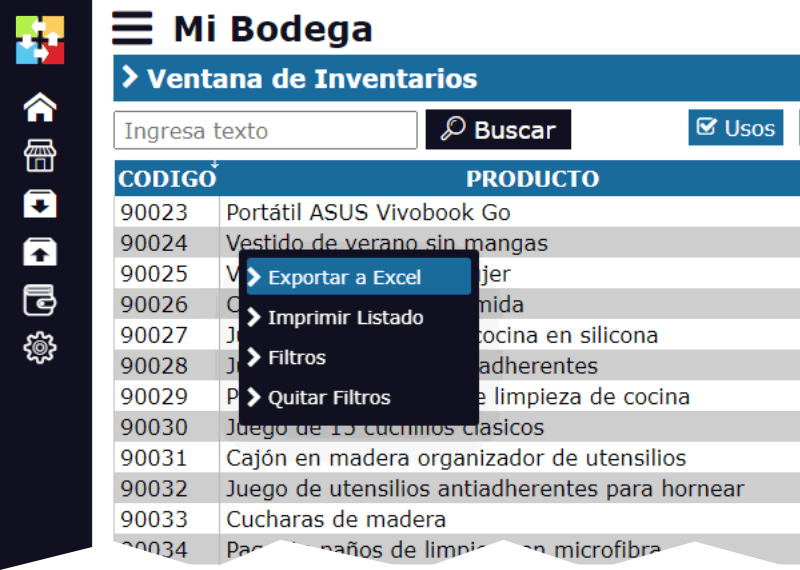Use of IoT sensors for real-time inventory monitoring in remote warehouses.
Use of IoT sensors for real-time monitoring of inventories in remote warehouses
Managing inventories in remote warehouses can be a challenge for companies that need to maintain precise control over their stock. Lack of real-time visibility into the status of inventories can lead to inventory errors, product losses, and delays in the supply chain. However, with the arrival of IoT (Internet of Things) technology, it is possible to monitor inventories in real-time and make informed decisions to improve efficiency and reduce costs.

What are IoT sensors?
IoT sensors are devices that can detect and measure changes in the physical environment, such as temperature, humidity, presence of objects, etc. These sensors can be connected to the network and send real-time data to a central server, where they can be processed and analyzed.
Types of IoT sensors for inventory monitoring
There are several types of IoT sensors that can be used to monitor inventories in remote warehouses, including:
- Presence sensors: detect the presence or absence of objects in a specific area.
- Motion sensors: detect the movement of objects or people in a specific area.
- Temperature and humidity sensors: measure the temperature and humidity in a specific area, which is important for products that require specific storage conditions.
- Weight and load sensors: measure the weight and load of objects in a specific area.
Benefits of using IoT sensors for inventory monitoring
Using IoT sensors to monitor inventories in remote warehouses offers several benefits, including:
- Real-time visibility: IoT sensors provide real-time information about the status of inventories, allowing for informed and quick decision-making.
- Reduction of inventory errors: IoT sensors can detect inventory errors and alert responsible parties to take corrective action.
- Improved efficiency: IoT sensors can help optimize inventory management and reduce costs associated with inventory management.
- Security and control: IoT sensors can detect attempts at theft or tampering with inventories and alert responsible parties.
Implementation of IoT sensors for inventory monitoring
Implementing IoT sensors for inventory monitoring in remote warehouses requires careful planning and effective execution. The following are the general steps for implementing IoT sensors for inventory monitoring:
- Define objectives and requirements: define the objectives and requirements of the project, including selecting the appropriate sensors and defining the monitoring parameters.
- Select sensors and infrastructure: select the sensors and infrastructure needed for the project, including the network and servers.
- Install and configure sensors: install and configure the sensors in the remote warehouse and ensure they are functioning properly.
- Integrate sensors with the inventory management system: integrate the sensors with the inventory management system so that data can be processed and analyzed.
- Monitor and adjust: monitor the data and adjust the configuration of the sensors and the inventory management system as needed.
Conclusion
Using IoT sensors to monitor inventories in remote warehouses is an effective solution for improving efficiency and reducing costs. IoT sensors can provide real-time visibility into the status of inventories, reduce inventory errors, and improve security and control. Implementing IoT sensors requires careful planning and effective execution, but can have a significant impact on inventory management and the supply chain.





